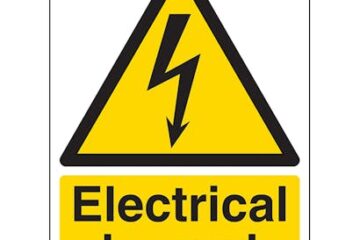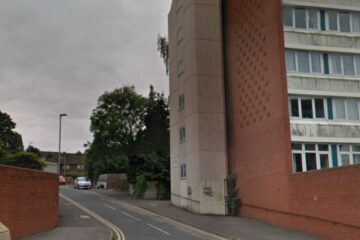As you may be aware if you are already reading this, a new law has been passed making EICRs for rental properties mandatory. Landlords & agents will now have to ensure that electrical installations are deemed as safe by a competent person from 1st July 2020 for any new tenancies. Rental properties with existing tenancies have until 1st April 2021 to become compliant.
Private landlords will now have to have an EICR carried out on a rental property at least every 5 years. The Electrical Safety Standards in the Private Rented Sector (England) Regulations 2020 (quite a mouthful) place the onus on private landlords to make sure the electrical installation is safe for use by having them checked against the relevant standards.
What is an EICR?
An EICR, an Electrical Installation Condition Report to give it its full title is exactly that; a report that details the condition of the electrical installation. It covers everything from the supply cables by the electricity meter, to the consumer unit (fuseboard), down the cables and to the accessories, such as the sockets, switches, light fittings & more.
A suitably qualified electrician undertakes a series of thorough visual inspections and electrical tests and using a detailed knowledge of the Wiring Regulations, determines whether it is safe or not, and whether work is needed to bring it up to standard. The easiest way of thinking about it is like an MOT on the building’s electrics.
How much will it cost?
The cost will vary depending on the type of installation. We calculate our price per circuit, and each fuse or circuit breaker in your consumer unit = 1 circuit. RCDs and main switches do not count. Some properties may have more than one consumer unit such as in a shed or garage.
This can be quite confusing if you’re not sure what you are looking for as the consumer units can be quite different depending on the age of the installation. If you need help you can email us pictures of your consumer unit with the lid open so that we can double check & give you an accurate quote.
How long will it take?
We allow around 30 minutes per circuit, and that is normally fine providing there are no unusual items that need further investigation. Where there are no previous records, the regulations state that 100% testing is undertaken (this means all accessories are inspected). Some contractors offering cheaper prices ignore this and only sample test part of your installation.
How many circuits will I have?
This depends on the type of property – the average is around 8. For some older or smaller properties this can drop to 6 or even 4. Larger properties and flats (many flats have electric heating, which can increase the number of circuits significantly) can have 10 or 12.
What happens when it is completed?
A detailed report is issued that includes details of all the circuits and the tests that were undertaken, plus a list of the visual inspections & their results. The main part to consider for a private landlord is whether it is marked satisfactory or unsatisfactory – this is jargon for pass or fail.
Why would it fail?
Each deviation from the wiring regulations is assigned a code – C1, C2, C3 & FI.
C1 = a serious item that needs fixing immediately.
C2 = an item that does not meet the regs, and needs fixing in a timely manner.
C3 = improvement recommended.
FI = further investigation required without delay.
C1s, C2s & FIs will result in the report being marked unsatisfactory.
C3s are commonly used for regulations that have been brought in since the install was completed (see examples)
C1 Example
A socket has been damaged leaving live conductors accessible to touch.
C2 Example
A socket has been damaged but no live parts are accessible.
C3 Example
The socket has no RCD protection. A full rewire was completed on the building in 1999 & as such RCD protection was not a requirement when it was installed.
FI Example
This is rarely used but could cover items that aren’t explicitly mentioned in the standard EICR – such as emergency lighting in an HMO is very dim.
A report that only contains C3s or no deviations at all will be marked as satisfactory (pass).
What happens if it fails?
If you have a report that contains C1s, C2s or FIs you will need to arrange remedial works ideally before the tenant moves in. You do not have to carry out an EICR again after completion – you should be issued a minor works certificate when the remedials are completed, you keep this cert with the EICR to show that the work has been fixed. You do not have to use the same contractor to carry out the remedial work as you do for the EICR.
As we only use qualified electricians to carry out rental property EICRs, we are in a position to fix small items there & then. We carry an amount of stock on our vans, such as replacement sockets, switches, lighting points. From time to time, we have also fixed slightly larger jobs the same day using local wholesalers. This saves a second visit & stops any letting of the property being delayed.
Does this apply to all tenancies?
There are some tenancies that are excluded from the regulations. If your rental property falls into any of these categories, The Electrical Safety Standards in the Private Rented Sector (England) Regulations 2020 will not apply to you (but others might, so be sure to check)
- Private registered providers of social housing
- Shared accommodation with the landlord or landlord’s family
- Long leases, i.e. longer than seven years
- Student halls of residence
- Hostels
- Refuges
- Care homes
- Hospitals
- Hospices
- Other accommodation relating to healthcare provision
How often will I need to perform an EICR on the rental property?
The law now states that an EICRs should be carried out at periods no longer than 5 years apart or, at shorter intervals as specified by the inspector. This is quite rare, but the regulations do allow the inspector to deem shorter intervals for testing as they see appropriate. Areas classed as special locations would also require more frequent testing – for example, swimming pools & saunas would have a 12 month recommendation, although they will be uncommon for most rental properties.
What happens if I don’t perform an EICR?
The new law has given the local authority powers to fine private landlords up to £30,000 per penalty. This fine can be repeated in the event of continuing breaches. Housing authorities also have the power to arrange urgent remedial action and charge the landlord for these works.
How do I prove that I’ve completed the work?
When requested, the report must be provided to the local authority within 7 days of notice. The private landlord must also supply a copy to any new tenant before occupation, or to any prospective tenant within 28 days of request from that prospective tenant. Lettings agents may also request the report before agreeing to let the property in question, but they will have their own rules regarding this and you should check beforehand.
Keypoints
- The Electrical Safety Standards in the Private Rented Sector (England) Regulations 2020 is a statutory document (this is a law, not a recommendation or guidance)
- 1st July 2020 deadline for new tenancies (tenancy agreed on 1st June 2020 or after)
- 1st June 2021 to get compliant for existing tenancies (tenancy agreed before 1st June 2020)
- Some limited tenancies are exempt (check list above)
- Local authorities have the power to complete remedial work & charge you
- Local authorities have the power to fine you up to £30,000 per instance for non-compliance
- Nearly all of our domestic EICRs are completed same day
- We can make small repairs at the same time (ensure someone is present to authorise the work if you’d like to make the most of this service)
- We only use qualified electricians not technicians
- Combine with PAT testing & fire/smoke detector testing for further cost savings
- Full packages for HMOs available, including emergency lighting & fire alarms
- Documents backed up in the cloud & accessible 24/7/365 with no charges for issuing new copies
- Fully insured, including £5 million professional indemnity cover
Frequently Asked Questions
[hrf_faqs category=’rental-property-eicrs’]External Link (Opens in new tab) – The Electrical Safety Standards in the Private Rented Sector (England) Regulations 2020




2 Comments
Bhavik · September 8, 2025 at 1:54 pm
The electrician issues an EICR with a validity of 3 years, including a recommendation to upgrade the consumer unit to a metal one, should this certificate still be considered valid?
Charlie · September 8, 2025 at 2:02 pm
Has your electrician given a reason to issue the certificate with a 3-year re-test frequency?
Issuing a recommendation to replace a non-metallic board is normal as that is the current requirement. If the board was installed pre-17th edition amendment 3 (July 2015) it should be coded as a C3 as a non-combustible consumer unit wasn’t a requirement before then.